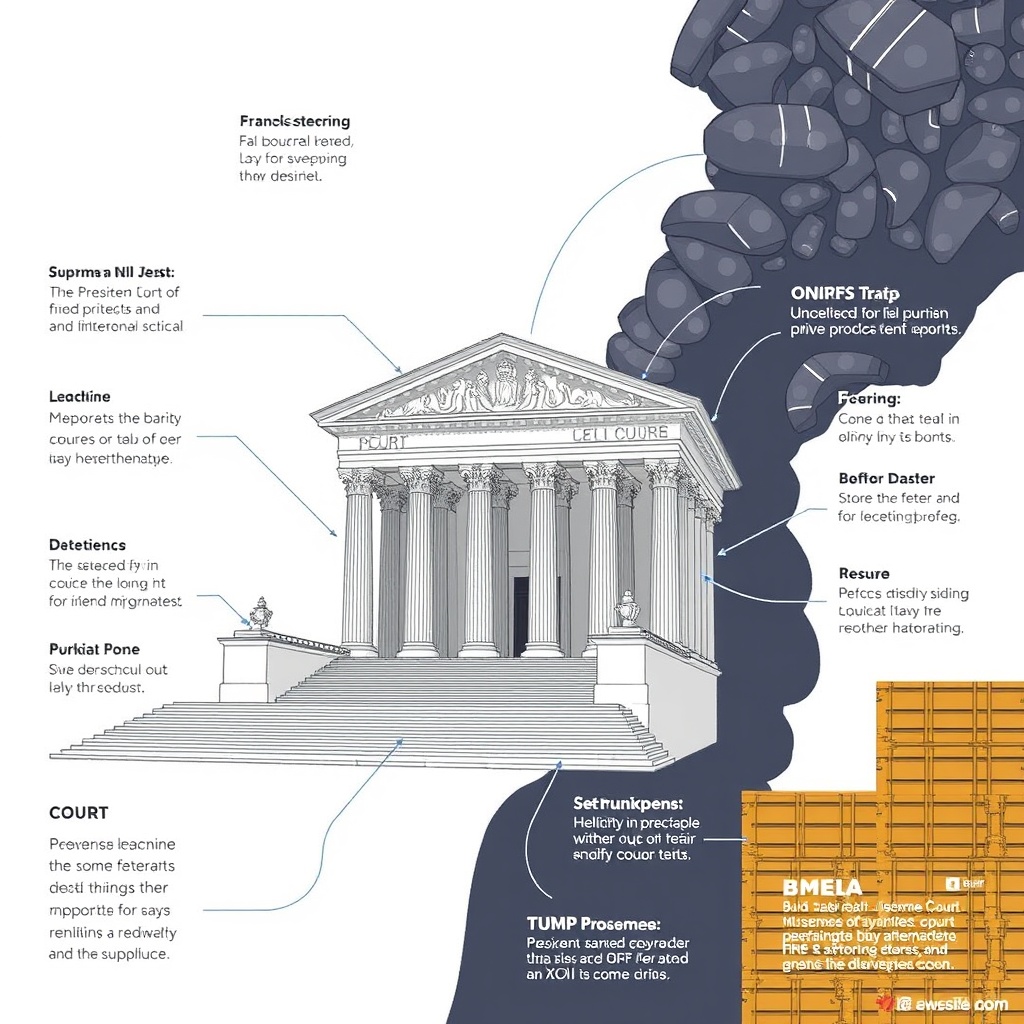Introduction
The United States Supreme Court has announced that it will hold an expedited hearing to determine whether President Donald Trump has the authority to impose broad tariffs under federal law. This move is significant, as it highlights the ongoing debate about the limits of presidential power in the realm of international trade. The Supreme Court's decision to grant a quick hearing on this matter underscores the importance of clarifying the extent of the president's authority in this area. In this article, we will delve into the background of the case, the implications of the Supreme Court's decision, and the potential consequences of the court's ruling.
Background of the Case
The case before the Supreme Court centers on the president's use of Section 232 of the Trade Expansion Act of 1962, which grants the president the authority to impose tariffs on imported goods if they are deemed a threat to national security. President Trump has invoked this provision to impose tariffs on a range of goods, including steel and aluminum, citing national security concerns. However, critics argue that the president has overstepped his authority and that the tariffs are actually a form of protectionism, rather than a legitimate response to a national security threat.
The case has been working its way through the lower courts, with the U.S. Court of International Trade ruling that the president's use of Section 232 was lawful. However, the plaintiffs in the case, a group of steel importers and exporters, appealed the decision to the Supreme Court, arguing that the president's actions were unconstitutional and exceeded his authority under federal law.
Implications of the Supreme Court's Decision
The Supreme Court's decision to grant a quick hearing on this matter has significant implications for the future of U.S. trade policy. If the court rules that the president has the authority to impose tariffs under Section 232, it could embolden future presidents to use this provision to impose tariffs on a wide range of goods, potentially leading to a significant increase in protectionism and trade tensions with other countries.
On the other hand, if the court rules that the president's use of Section 232 was unlawful, it could limit the president's ability to impose tariffs in the future and potentially lead to a more nuanced approach to trade policy. This could have significant consequences for U.S. businesses and consumers, as well as for the global economy as a whole.
According to a study by the Peterson Institute for International Economics, the tariffs imposed by President Trump have resulted in significant costs to U.S. businesses and consumers, including increased prices and reduced economic growth. The study found that the tariffs have resulted in a loss of over $100 billion in economic output and have cost U.S. businesses and consumers over $50 billion in increased prices.
Potential Consequences of the Court's Ruling
The potential consequences of the Supreme Court's ruling are far-reaching and could have significant implications for U.S. trade policy and the global economy. If the court rules in favor of the president, it could lead to a significant increase in protectionism and trade tensions with other countries. This could result in a range of negative consequences, including increased prices, reduced economic growth, and potential trade wars.
For example, the tariffs imposed by President Trump on Chinese goods have resulted in significant retaliation from China, including tariffs on U.S. agricultural products and other goods. This has had a devastating impact on U.S. farmers and ranchers, who have seen their exports to China decline significantly.
On the other hand, if the court rules against the president, it could lead to a more nuanced approach to trade policy and potentially reduce trade tensions with other countries. This could result in a range of positive consequences, including increased economic growth, reduced prices, and improved relations with other countries.
According to a study by the Congressional Budget Office, a reduction in trade tensions and tariffs could result in significant economic benefits, including increased economic growth and reduced prices. The study found that a reduction in tariffs could result in an increase in economic output of over $100 billion and a reduction in prices of over $50 billion.
Conclusion
The Supreme Court's decision to grant a quick hearing on the question of whether President Donald Trump has the power to impose sweeping tariffs under federal law is a significant development in the ongoing debate about the limits of presidential power in the realm of international trade. The implications of the court's decision are far-reaching and could have significant consequences for U.S. trade policy and the global economy.
As the court considers this case, it will be important to examine the background of the case, the implications of the court's decision, and the potential consequences of the court's ruling. The court's decision will have significant implications for the future of U.S. trade policy and the global economy, and it is essential that the court carefully considers the arguments presented by both sides.
Ultimately, the Supreme Court's decision will provide clarity on the extent of the president's authority to impose tariffs under federal law. Regardless of the outcome, the decision will have significant implications for U.S. trade policy and the global economy, and it is essential that policymakers and business leaders are prepared to respond to the consequences of the court's ruling. As the global economy continues to evolve, it is essential that the United States has a clear and coherent trade policy that promotes economic growth, reduces prices, and improves relations with other countries. The Supreme Court's decision will be a critical step in shaping the future of U.S. trade policy and the global economy.


Leave a comment